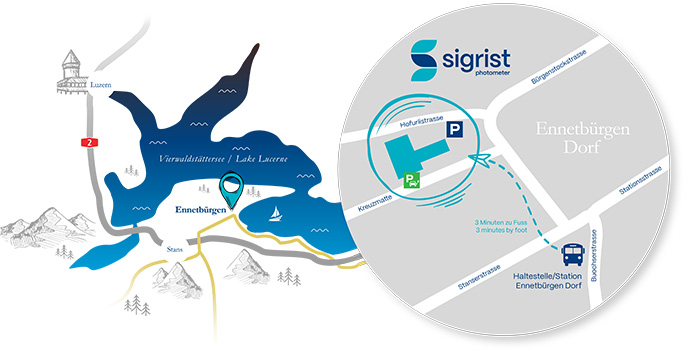In the broadest sense, a photometer is any instrument used to measure light intensity. As applied in industrial photometry, “photometer” is the general term covering instruments for detecting
in liquids and gases.
The objective is the same in all cases: to expose the medium in question to light and then to measure the intensity of the light (light intensity) produced by the respective phenomenon using various measuring methods. Figure 35 shows the principle of the single-beam method as it is used for absorption measurement.

Fig. 35: Single-beam method with light source (1), flow cell (2), photo receiver (3) and amplifier (4)
The light source transmits a light beam through the medium in the flow cell and the photoreceiver measures the intensity of the remaining light. After being amplified in the amplifier, an electrical signal is delivered as the absorption reading.
The purpose of the measurement is to detect how much the light intensity is attenuated by the substance in the flow cell. Besides this sought variable, however, the reading will also be affected by the luminosity of the light source and the sensitivity of the photoreceiver. Because the properties of these components vary as a result of aging and fluctuations of the supply voltage and the ambient temperature, single-beam photometers are inherently unstable and require frequent recalibration.
This may be feasible for intermittent measurements in the laboratory, but it is clearly unacceptable for industrial duty and continuous measurement. One way to eliminate the effect of light source fluctuations is to use the dual-beam method as shown in Fig. 36.

Fig. 36: Dual-beam method with two photodetectors measurement beam (1) and reference beam (2)
With this configuration, a semi-transparent mirror produces two beams: a measurement beam, which passes through the sample and strikes the first photoreceiver, and a reference beam that goes straight to the second receiver.
Because the reading represents the ratio of the two, fluctuations of the light source's luminosity have no effect on the results.


